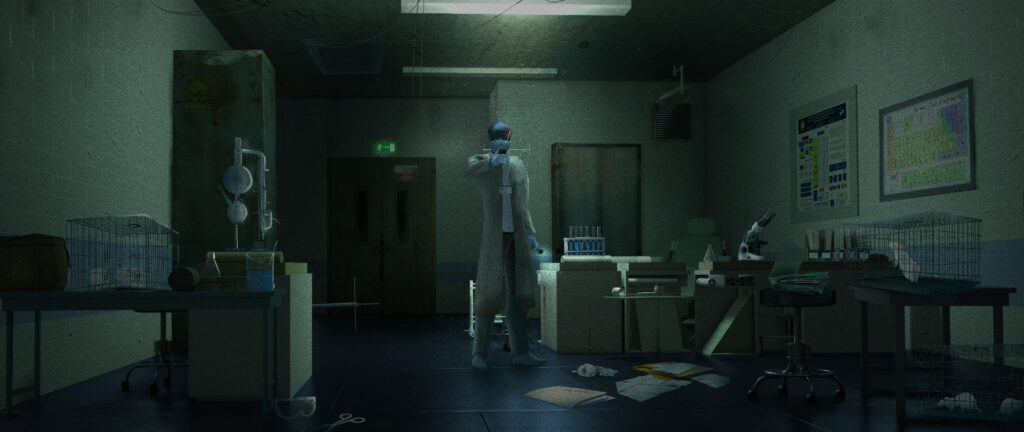In this project, virtual reality is used as a method to investigate the fundamental differences between anxiety and fear. The objective is to gain new biological insights into these two primary emotions and to derive therapeutical measures for the treatment of anxiety disorders, panic attacks, and phobias.
Anxiety and fear arise in a confrontation with negative stimuli and surrounding conditions. Psychologists speak of fear when humans or animals flee from a threatening situation, for example when an attacker suddenly appears from behind a bush. With the emotion of anxiety, on the other hand, one is willing to face an unpleasant situation such as an examination. Fear appears to be the more relevant emotion from an evolutionary perspective for the survival of a species, as only anxiety can be influenced by medication. Fear cannot be suppressed and leads to three graded behavioral alternatives: flee, freeze, or fight.
To investigate these phenomena, scientists from the Differential and Biological Psychology Section of the Institute of Psychology at the University of Bonn, and the Cologne Game Lab from the TH Köln – University of Applied Sciences, are making use of virtual reality. In the research project promoted by the Daimler and Benz Foundation, test persons are fitted out with virtual reality (VR) glasses. Their task is to escape from an underground VR scenario – a labyrinth of dark passageways and research laboratories in which intimidating experiments are conducted – while carrying out specific tasks and resolving conflicts.

This experimental setup is suitable for investigating the behavioral reactions of the test persons. Do they flee, freeze, or fight in an extremely realistic situation of threat? The researchers match the results against the test persons’ genetic markers and personality data. In the course of this funding project, which is scheduled to run for three years, they are setting out to determine whether differences in individual personal characteristics regarding anxiety and fear can be validated using the VR behavioral data, and whether the behavior of a test person can be predicted. They will also prospectively examine anatomical differences in brain structure that point to individual characteristics of the anxiety and fear dimensions. These findings should provide the basis for using virtual reality to develop exposition therapies and assess the effectiveness of medications.
In September of 2022, the “Fear//Anxiety” was awarded with the XR Science Award in the category “Best Practice”, awarded by the DIVR (Deutsches Institut für Virtuelle Realitäten) for European research projects in the field of AR & VR. The category recognizes the project that is best received in the field and successfully makes the step from the lab to practical application.

The German Institute for Virtual Reality DIVR launched the award 5 years ago to provide a platform for the European AR/VR scene to promote new technologies in early stages. In addition to the main categories “Best Concept,” “Best Practice,” and “Best Tech,” the special awards “Performance& Art,” “Immersion& Interface,” and “Athletic Performance, Psychology & Health” were presented for the first time.
“Fear//Anxiety” is a collaboration between CGL andthe Differential and Biological Psychology Section of the Institute of Psychology at the University of Bonn. It is funded by the Daimler and Benz Foundation.
https://www.daimler-benz-stiftung.de/cms/en/research/research-forum/anxiety-and-fear.html

